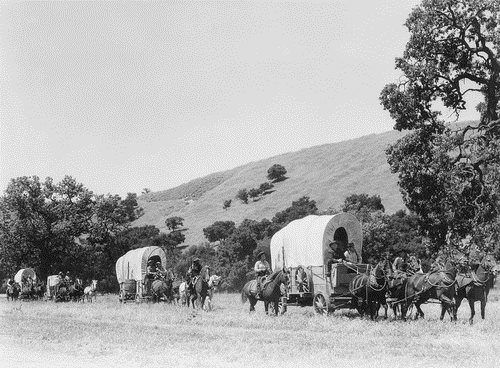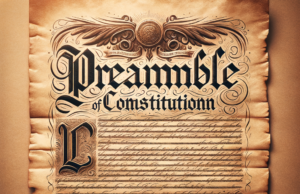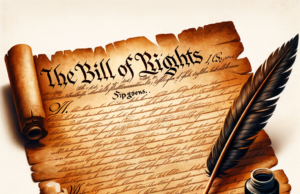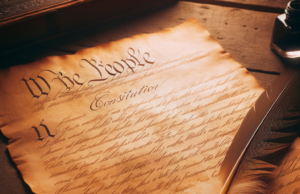
The Northwest Ordinance: Shaping the American Frontier
The Northwest Ordinance of 1787 stands as one of the most significant and forward-thinking pieces of legislation in early American history. This groundbreaking law not only provided a blueprint for the orderly settlement and governance of the vast Northwest Territory but also set important precedents for the expansion of the United States and the eventual growth of the nation. In this article, we will explore the Northwest Ordinance, its origins, key provisions, and its enduring impact on American history.
Background and Context
Following the American Revolution, the newly formed United States faced the challenge of governing the territories acquired from Britain, including the Northwest Territory, which encompassed lands west of the Appalachian Mountains and north of the Ohio River. This vast territory presented both opportunities for westward expansion and challenges related to governance and settlement.
Key Provisions of the Northwest Ordinance
1. Territorial Division: The Northwest Ordinance divided the Northwest Territory into a system of townships and ranges. Each township measured six square miles and was further divided into 36 sections of one square mile each. This grid system facilitated land surveys and the sale of land to settlers.
2. Admission of New States: The ordinance established a process for the creation of new states from the Northwest Territory. Once a territory reached a population of 60,000 free inhabitants, it could apply for statehood. This process emphasized the importance of self-governance and representation.
3. Bill of Rights: The ordinance guaranteed certain civil liberties to settlers in the territory, including freedom of religion, the right to a trial by jury, and protections against cruel and unusual punishment. These provisions became a model for future state constitutions and the Bill of Rights in the U.S. Constitution.
4. Prohibition of Slavery: Perhaps one of the most significant aspects of the Northwest Ordinance was its prohibition of slavery in the territory. It declared that “there shall be neither slavery nor involuntary servitude” in the Northwest Territory, setting a precedent for the exclusion of slavery in new states formed from the territory.
5. Public Education: The ordinance also recognized the importance of education, setting aside section 16 of each township for the support of public schools. This commitment to education reflected the belief that an educated populace was essential for self-governance.
Impact and Legacy
The Northwest Ordinance had a profound and lasting impact on American history:
1. Expansion and Settlement: The orderly land survey system promoted by the ordinance facilitated the westward expansion of the United States. It provided a clear framework for settlers to purchase and develop land in the territory.
2. Statehood Process: The ordinance’s process for admitting new states into the Union became a model for subsequent territories seeking statehood. It emphasized the principles of self-governance and representation, which were central to American democracy.
3. Anti-Slavery Stance: The Northwest Ordinance’s prohibition of slavery set a significant precedent for the exclusion of slavery in newly admitted states. It contributed to the sectional tensions that would eventually lead to the American Civil War.
4. Education Emphasis: The commitment to public education in the ordinance underscored the importance of knowledge and education in American society. This emphasis on education would continue to be a fundamental aspect of American culture.
Conclusion
The Northwest Ordinance of 1787 was a visionary piece of legislation that shaped the growth and development of the United States. It provided a framework for westward expansion, set the stage for the formation of new states, established key principles of civil liberties, and took a historic stance against the expansion of slavery. The enduring legacy of the Northwest Ordinance is evident in the states that emerged from the Northwest Territory and in the principles of democracy and freedom that continue to define the United States.
The Northwest Territory included land that existed outside of the original 13 states, comprised of what is now Ohio, Indiana, Illinois, Michigan, Wisconsin, and Minnesota.
Though the Articles of Confederation was founded under the pretense of diminishing the authority that the central Government had over the individual states, the Central Government was given control over the regulation of westward expansion.
The Northwest Ordinance gave settlers free rein to colonize the 5 states outlined in the document. Under the regulations of the Northwest Ordinance, all settlers were entitled to the same freedoms and liberties afforded to citizens of the original 13 states. Located within the text of the Northwest Ordinance was a section entitled “Articles of Compact”, consisting of 6 procedural requirements to which settlers were obligated to adhere.
They included an outline of processes and regulations, which ensured that the guidelines set forth in the Articles of Confederation were upheld in every territory included in the western expansion effort. Because both the Continental Congress and Thomas Jefferson were in favor of expanding the borders of the United States of America, the Northwest Ordinance was passed in order to persuade, rather than deter, settlers to do so.
In order to retain control of the expansion, only a certain amount of land was allotted to settlers participating in the western expansion effort. The Articles of Confederation allowed the central Government to regulate all boundary parameters set forth in the Northwest Ordinance and, as a result, the central government was responsible for granting statehood to the territories.
The Northwest Ordinance required that once a territory had 5,000 settlers, they would be able to send a non-voting representative to Congress. In addition, once a territory amassed 60,000 settlers they would be entitled to apply for statehood.
The Articles of Compact required that every settlement adheres to the tenets set forth in the Articles of Confederation, which ensured that the liberties afforded to citizens residing in the 13 states would be allowed to all settlers. The six principles of the Articles of Compact stated that:
1. All settlers were granted freedom of worship;
2. All settlers were both entitled to a trial by jury, as well as habeas corpus;
3. All settlers were encouraged to establish functional community relations, which included school systems and adequate housing. In addition, settlers were forbidden to do unjust harm to Native Americans residing in surrounding areas;
4. All settlers were to adhere to the Articles of Confederation, and as the citizens of the 13 states, they too were exempt from Government-impost taxes;
5. All settlers adhere to the boundaries set forth in the Northwest Ordinance. They were forbidden from expanding past the set parameters;
6. Slavery was forbidden in the western territories.
The Northwest Ordinance was one of the few jurisdictions that the Articles of Confederation had granted the central government and the enforcement of its regulations allowed for a democratic expansion of the United States of America’s border fueled by liberty and opportunity.


























